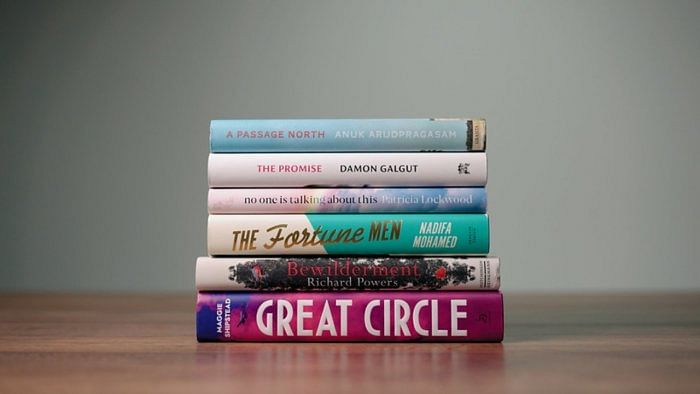
When Indian author Geethanjali Shree’s Tomb of Sand won the 2022 International Booker Prize, it not only became the first book written in an Indian language to win the coveted honour but also the first novel translated from Hindi, specifically, to be recognised for the award.
A commendable achievement indeed that deserves plaudits from one and all.
The award hasn’t come a day too soon and, hopefully, it will turn the spotlight on Indian literature and literary translations, enabling more books written in Indian languages to be translated into English and other international languages.
As the chair of the jury said, the recognition for Tomb of Sand was important given its language, as tens of thousands of books are published every year in Indian languages, yet few are translated into English. Publishers back home feel this will just energise an ecosystem that is already on its way to revolutionise Indian publishing.
India’s multiplicity of languages is well-known. There are scores of authors who write in the numerous Indian languages but very little of their work gets translated into English, let alone other languages.
Literature in Indian languages is rich and vibrant, with several books published every year, but their readership is mostly limited to readers of that particular language. For instance, Hindi books are read largely by Hindi-literate readers; the same goes for Bengali, Marathi, Tamil, Malayalam, Kannada and other books. A handful of these books are translated into English and some other languages, thus gaining wider readership. But given the large body of work that is published in Indian languages, it leaves a lot to be desired.
The major problem with translations in India relates to funding. Indian language authors and publishers have spoken time and again at literary festivals and other forums about the economic infeasibility of translations. “Publishing is a business, they look at return on investment and how to make it viable,” says Kannada writer Vivek Shanbhag, whose first translated work, Ghachar Ghochar, was a finalist for the Los Angeles Times Book Prize and the International Dublin Literary Award.
Shanbhag counts himself among the “fortunate” authors to have found a good translator in Srinath Perur who has also translated Girish Karnad’s autobiography.
With little money in translations and where quality is absolutely important, the interest and initiative have to come from the translator. Sadly, there are very few good translators in India, and even more saddening is the lack of monetary incentives for translators to take up what is considered a time-consuming and labour-intensive job.
Even the Sahitya Akademi, set up to promote literature in Indian languages, perhaps finds it unsustainable to undertake translations. It had launched a project in 2010 called ‘Indian Literature Abroad’ (ILA) with the aim of translating Indian books but that seems to be no more. The Akademi has done its bit in promoting Indian literature, but it could do a lot more in getting Indian books translated and offering greater incentives to translators as well as promoting writers and translators.
Also, literacy among readers is not uniformly spread across India. Some states such as Kerala are very literate and Malayalam books have large readership whereas in some states such as Uttar Pradesh or Bihar, literacy rates may be lower and hence readership too is low. As Malayalam author Benyamin candidly asks, “if my books are selling in thousands, why should I think of translating and getting them published in English.”
But all’s not so bad. In the last few years, the translation scene has improved, and publishers have realised that some of the best writing in India is happening in regional languages and hence it is important to translate these works in English.
Moreover, and interestingly, translated books have been winning awards. In recent years, winners of the JCB Prize for Literature have been books translated from regional Indian languages. Likewise, translated works of Indian writers have bagged the prestigious DSC Prize for South Asian Literature.
The great Rabindranath Tagore won the Nobel Prize for literature over a hundred years ago in 1913 for his book of poems Gitanjali, originally written in Bengali, testimony to India’s literary prowess. It is a sad irony that there is a bias towards English in India and elsewhere today, but let’s not, at the same time, forget that English remains the most accessible language globally. Hence, it is imperative that Indian language books must be translated into English first to gain readership and recognition.
Let’s hope Geethanjali Shree’s big, international award translates into publishers and the government stepping up their efforts to encourage Indian language writers and translating their works so that the exceptional storytelling of Indian writers and the rich literary heritage of India reaches readers worldwide.